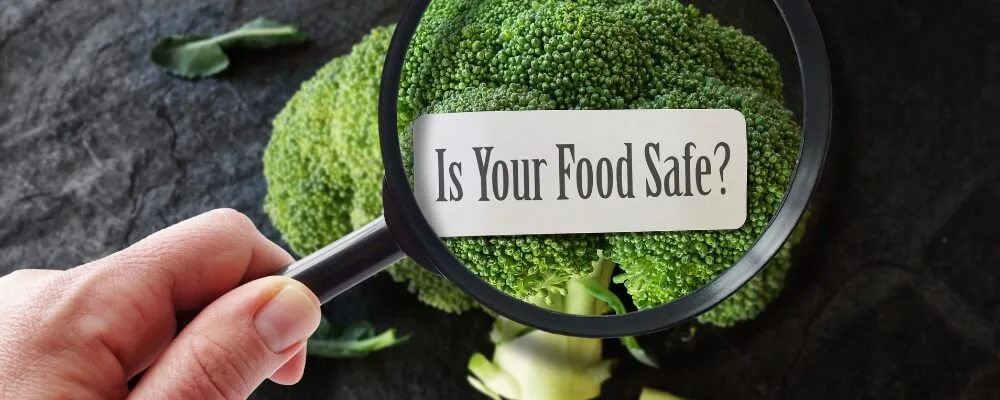In the intricate world of food production, ensuring the end product’s safety and quality is paramount. Not only is it a matter of public health, but it also impacts the reputation and bottom line of the companies involved. Enter the HACCP Plan, a revolutionary approach that has transformed the way the industry thinks about food safety.
Standing for Hazard Analysis and Critical Control Points, HACCP provides a structured methodology to identify, evaluate, and control food safety hazards. But what exactly is a HACCP Plan? And once you understand its significance, how can it best be implemented in a practical setting?
Dive into this comprehensive guide as we unpack the essence of HACCP and provide actionable tips to effectively incorporate it into your food production processes. Whether you’re an industry veteran or just starting, this guide will offer insights to bolster your food safety initiatives.
What is a HACCP Plan? Definition
HACCP stands for Hazard Analysis and Critical Control Points. It is a proactive and preventive management system used in the food industry to ensure the safety of food products. The HACCP system helps to identify, evaluate, and control food safety hazards.
A HACCP Plan is a written document that delineates the procedures to prevent food safety hazards during production. The plan is based on the seven HACCP principles:
- Hazard Analysis: The initial step involves identifying and assessing potential hazards (biological, chemical, and physical) associated with the food production process.
- Determine Critical Control Points (CCPs): These are the points where potential hazards can be prevented, eliminated, or reduced to acceptable levels.
- Establish Critical Limits: These are the maximum or minimum values to which a hazard must be controlled at a CCP to prevent, eliminate, or reduce it to an acceptable level.
- Establish Monitoring Procedures: This involves defining how the CCPs will be checked or confirmed to ensure they are within the critical limits.
- Establish Corrective Actions: These are the steps to be taken when monitoring indicates that a CCP is not within its established limits.
- Establish Verification Procedures: Besides monitoring, these activities ensure the HACCP system works effectively.
- Establish Record-keeping and Documentation Procedures: This principle requires maintaining documentation of the HACCP system and recording specific details such as monitoring activities, deviations, and corrective actions.
A well-designed HACCP plan provides a structured approach to ensuring food safety. It is beneficial not only for food production facilities but also for regulatory agencies and the end consumers. Moreover, a HACCP plan can be integrated with other quality management systems like ISO 22000 and IFS Food Standard. The goal is to produce and distribute safe food for consumption and reduce the risks of foodborne illnesses.

How Can A HACCP Plan Best Be Implemented?
Implementing a HACCP (Hazard Analysis and Critical Control Points) plan requires a systematic and disciplined approach. When effectively implemented, the HACCP system can minimize the risks of food safety hazards. Here’s how a HACCP plan can best be implemented:
1. Top Management Commitment
The pivotal role of top management in implementing a HACCP plan cannot be overstressed. Their understanding and endorsement of the HACCP approach provide the foundation for its successful adoption.
When top leaders are committed, they ensure that sufficient financial, human, or technological resources are available to develop and maintain the HACCP system. Furthermore, their commitment sets the tone for the entire organization, emphasizing the importance of food safety and influencing its culture to prioritize consumer well-being.
2. HACCP Team Formation
Forming a dedicated HACCP team is instrumental in the plan’s successful execution. This team, composed of individuals with deep knowledge about the product, its production process, and potential hazards, drives the development, validation, and periodic plan review.
Their combined expertise ensures the plan is comprehensive and addresses all potential risks while being pragmatic and feasible to implement.
3. Describe the Product and its Distribution
A detailed description of the product and its distribution pathway is essential. The HACCP team can more accurately pinpoint where hazards might arise by thoroughly understanding the product – from its ingredients to its physical and chemical properties – and delineating its distribution, storage conditions, and expected shelf life.
This comprehensive understanding ensures no potential risks are overlooked during the subsequent hazard analysis.
4. Identify Intended Consumers
Recognizing the intended consumer base for the product can have significant implications for the HACCP plan. Different demographic groups, like infants, the elderly, or those with compromised immune systems, might have heightened susceptibilities to certain foodborne hazards.
The plan can be tailored to ensure the utmost safety for the most vulnerable groups by identifying the target audience.
5. Construct Flow Diagrams
A flow diagram visualizes the entire production process, from receiving raw materials to the point of product distribution. By laying out each step, the team can get a holistic view of the operation and identify stages where potential hazards could be introduced or exacerbated. Such a visual aid ensures the HACCP plan is comprehensive and targeted.
6. Verify Flow Diagrams
The creation of a flow diagram is just the first step. Verification is an essential follow-up, wherein the HACCP team physically inspects the production site to confirm the diagram’s accuracy. This on-site verification ensures that no steps are omitted and that the diagram faithfully represents the production process.

7. Conduct a Hazard Analysis
This is the heart of the HACCP plan. During the hazard analysis, the team meticulously assesses each step outlined in the flow diagram to determine potential biological, chemical, or physical hazards. The process involves gauging the likelihood of a hazard occurring and the severity of its impact. This dual assessment helps prioritize which hazards need the most rigorous controls.
8. Determine Critical Control Points (CCPs)
After identifying potential hazards, the next step is pinpointing the stages in the production process where these hazards can either be entirely prevented or reduced to acceptable levels. These pivotal stages are termed Critical Control Points. By focusing on these CCPs, the HACCP plan can offer targeted strategies that significantly impact food safety.
9. Establish Critical Limits for Each CCP
Critical limits act as thresholds that separate acceptable conditions from potentially hazardous ones. Setting clear, measurable limits for each Critical Control Point (CCP) – such as specific temperatures or pH levels – becomes evident when a process veers into unsafe territory.
These limits are not arbitrary but should be based on scientific, regulatory, or industry standards that dictate the conditions under which a particular hazard can be effectively controlled.
10. Establish Monitoring Procedures
Monitoring is overseeing CCPs to ensure they consistently operate within established critical limits. It’s not enough to establish limits; an ongoing system of checks and observations must be ongoing.
Deciding on the appropriate monitoring frequency, as is the choice of tools and equipment, is vital. The goal is to catch deviations in real-time, or as close to it as possible, allowing for prompt corrective action.
11. Determine Corrective Actions
Not all processes run flawlessly at all times. A predetermined action plan must be established when monitoring reveals that a CCP deviates from its critical limits. This can range from reprocessing the affected product, temporarily halting production, or discarding the product altogether in severe cases. Corrective actions are vital as they mitigate potential risks and bring the process back under control.
12. Establish Verification Procedures
Verification is confirming that the HACCP system is functioning as intended. This requires a set of procedures, separate from routine monitoring, to confirm the system’s effectiveness.
Periodic checks, testing of the final product, and additional measurements all serve as means to verify that the system isn’t just operational but effective in maintaining food safety.
13. Establish Documentation and Record Keeping
Documentation is the backbone of a successful HACCP system. It clearly records what was planned and done and any deviations and corrective actions taken. This not only aids in verifying the system but is also essential for regulatory compliance and potential audits.
Details about hazard analyses, decisions regarding CCPs, monitoring records, corrective actions, and verifications should all be meticulously maintained.

14. Review and Update the HACCP Plan
The world of food production is neither static nor unchanging. The HACCP plan must evolve as new products are introduced, suppliers change, or production processes get updated. Regular reviews ensure the plan remains relevant and effective, addressing any new potential hazards or operational changes.
15. Train and Educate Staff
The most meticulously designed HACCP plan will falter without proper execution. This hinges on the people responsible for its implementation. Training ensures that everyone, from line workers to supervisors, understands the what, how, and why behind each step. A well-informed staff is the frontline defense against food safety breaches.
16. Ongoing Evaluation and Improvement
The journey towards food safety is not a destination but a continuous process. Even with a HACCP plan, there should be an ongoing commitment to evaluating its effectiveness. This involves proactive adjustments based on new research findings, technological advancements, or feedback from the implementation process.
A commitment to continuous improvement ensures that the HACCP system remains robust and responsive to the ever-evolving landscape of food production.
Conclusion
The HACCP Plan emerges not just as a set of guidelines but as an indispensable tool in the arsenal of food production to safeguard consumers and uphold industry standards. Its systematic approach allows for a detailed analysis and control of potential hazards, ensuring the delivery of safe and high-quality food products.
However, understanding HACCP is only half the battle; effective implementation is where the true challenge lies. With commitment from top management, a dedicated team, continuous training, and an ever-evolving mindset toward improvement, organizations can harness the full potential of HACCP. In an industry where compromise can lead to significant consequences, the importance of a well-executed HACCP plan cannot be overstated.
As we conclude our deep dive into HACCP and its best practices, remember that its success is rooted not just in meticulous planning but in relentless execution and periodic review. Embrace HACCP, stay informed, and continue setting the gold food safety standard.

